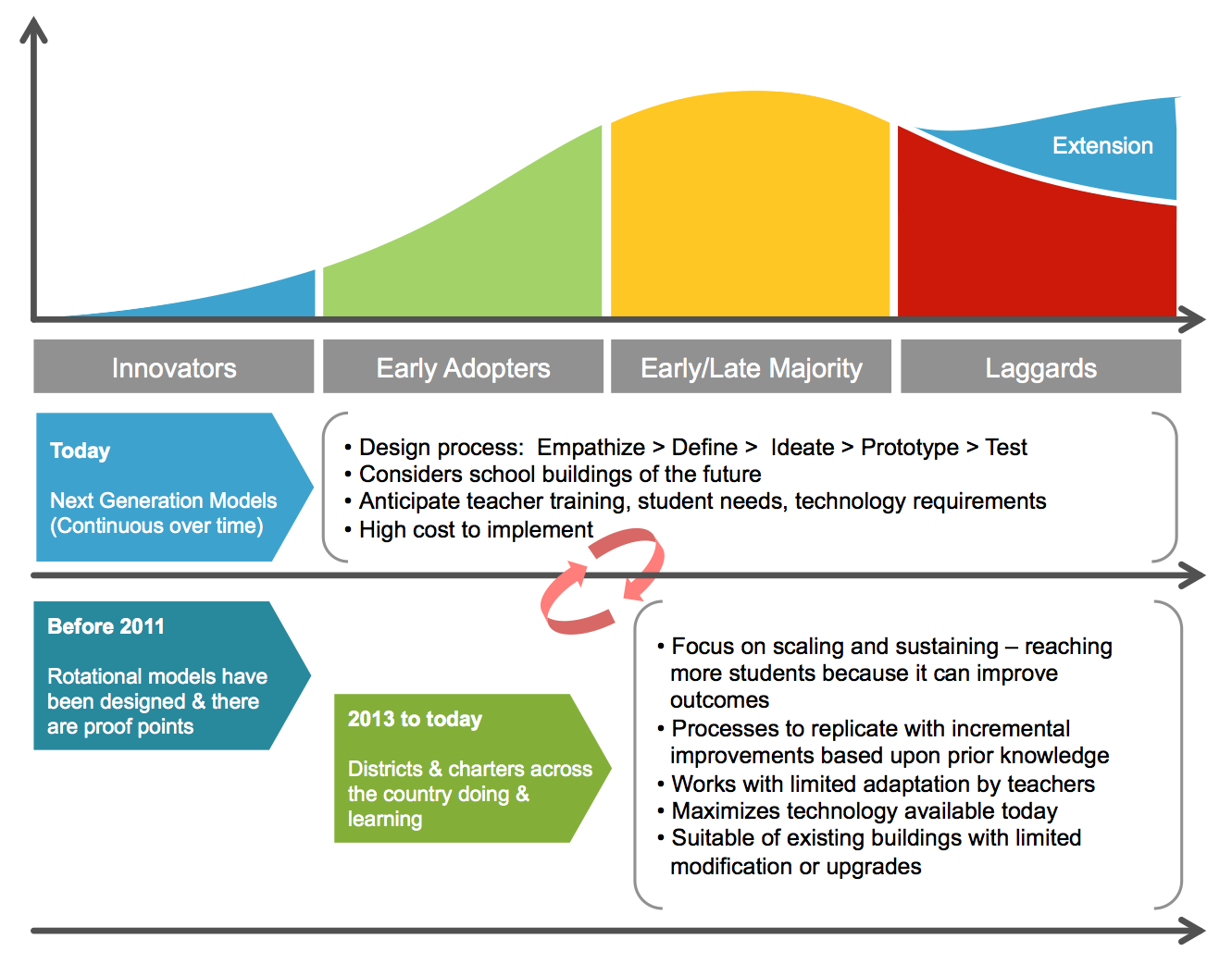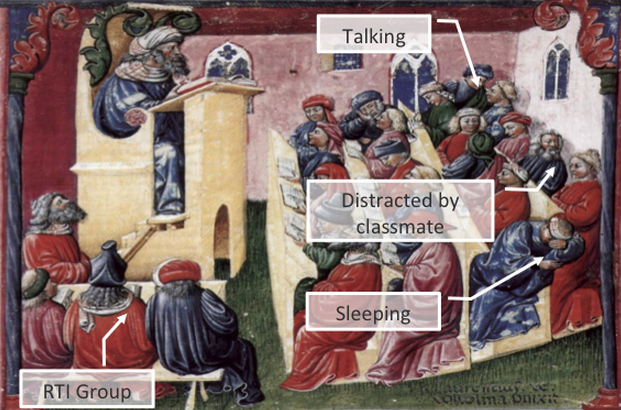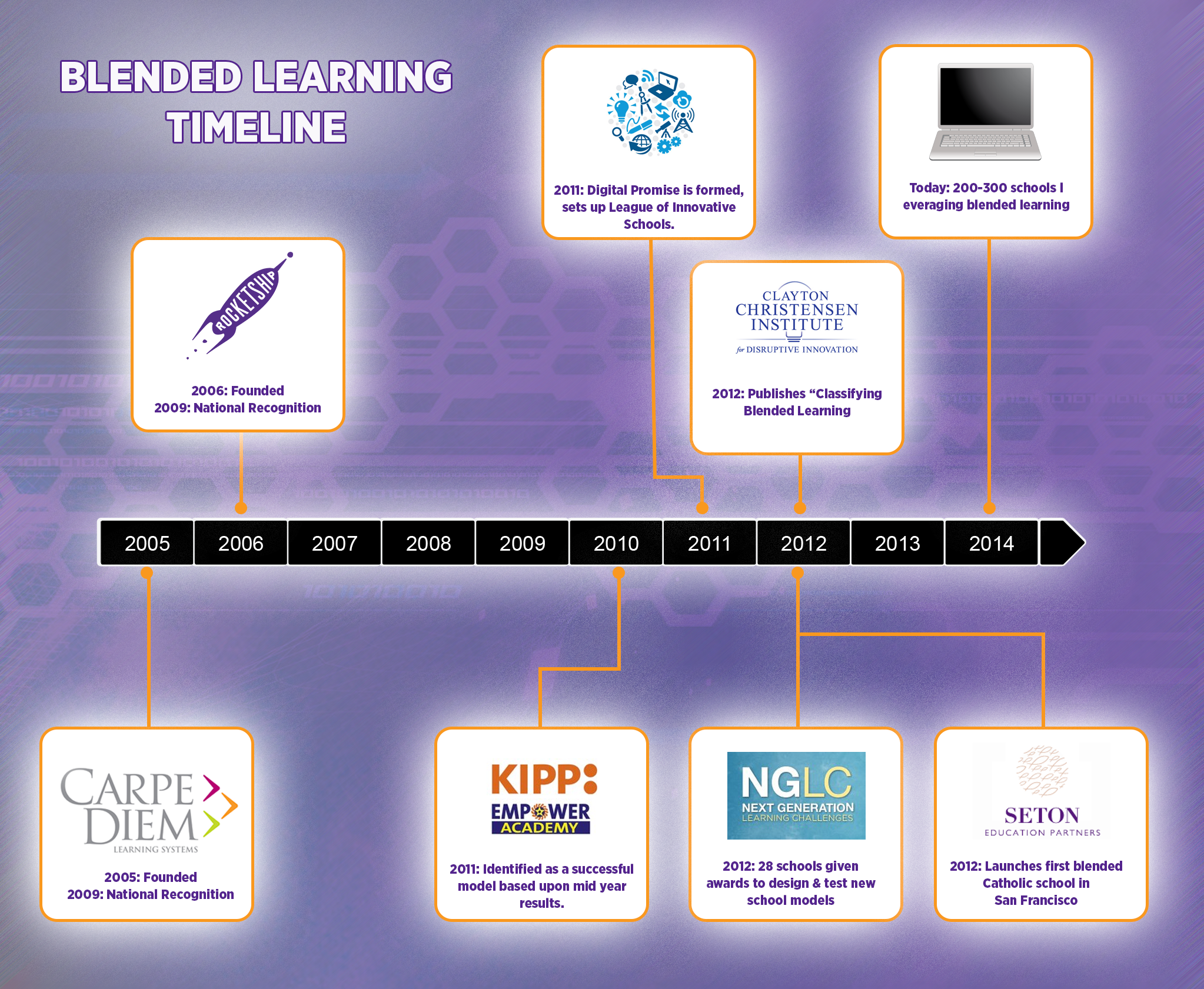
DaVinci Code – Education’s Search For The Holy Grail
by Anthony Kim, CEO of Education Elements
In the book The DaVinci Code, we find out that the Holy Grail is not a physical chalice, but Mary Magdalene, who carried the bloodline of Christ. I often feel that in education we are often focused on the wrong thing leading to a futile search for something that doesn’t exist. Today and in the past, we’ve looked to find the perfect technology which will educate students so perfectly, delivering the right thing at the right time. In recent years, there has been a surge of this thinking around school models and tremendous energy has been put towards the search for the perfect one. In my opinion, the Holy Grail is not in the school model, but in the notion that educators want to try something different: leveraging technology with a focus towards personalizing learning for every student. Why is this such a big deal? Take a look at this 13th Century tapestry depicting a classroom. For the past 600 years, not much has changed.
Brief History of Blended Learning
The lab rotation model was implemented and promoted by Rocketship Education in 2006. I remember first hearing about Rocketship Education in 2009 at the Charter School Growth Fund’s Innovation Summit. John Danner, a co-founder, won first place, and I won third place for a hybrid high school design. In 2009, Rocketship helped put the term blended learning on the map by replicating their model in multiple schools and proving that the lab rotation model could produce extraordinary outcomes for kids. Five years later, they continue to excel with their model. Since 2005, Carpe Diem Learning Systems in Yuma, AZ, designed, implemented and continues to improve upon their flex model. For years no one had heard about a flex model, Carpe Diem nor the incredible academic growth they were achieving. In 2010, we were one of the first national groups to visit Carpe Diem and a year later, everyone was talking about their model.
In April of 2010, Mike Kerr — Principal at KIPP Empower — and I sat around a table to talk about a new school design he was considering for launch in August of 2010 in Los Angeles. Classes sizes were increasing to 30 kids and he needed to find a way to make instruction feel small again. The initial design split students into three groups of ten, which rotated between a teacher, teaching aid and computer station. This was later categorized as the class rotation model. KIPP Empower made impressive gains, growing from 9% proficiency to 98% in a single year. By the third year, students scored a 991 on the CA API (10th best in the state of CA). It wasn’t until 2012 that Michael Horn and the Christensen Institute classified the different models. In the same year, many foundations started to fund the innovation of new school models through Next Generation Learning Challenges or through directly funding some schools. Today there are 200-300 blended learning schools across the country – districts, charters, Catholic, Jewish day schools. This is still a small percentage of the 100,000 schools in the U.S.
The Changing Classroom & Making It Happen
Educators along this journey will wear different hats. In 2005, Rocketship and Carpe Diem focused on R&D: design and improving their model at a single school. This early work has paved the way for them to replicate, making the same opportunities available for more students.Now they are in their next phase, which is to scale. It doesn’t mean that their models won’t change over time, but they have a pretty good sense of what works for them. I would still consider Rocketship and other schools leveraging blended learning to be in the Early Adopter phase; there are still 100,000 schools, five million teachers and 55 million students who aren’t doing some form of blended learning. Some educators will continue to develop new models inspired by the early pioneers, the results from blended learning, or the desire to better personalize learning for every student. We should continue to support these innovators to push the needle, but the reality is some will fail and that should be expected. “There is no innovation without failure.” 
Trends Towards the Future of Blended Learning
In coming years, blended learning will continue to be more widely adopted and educators will become more confident about this approach, especially as more proof-points pop up in their respective regions. Soon educators won’t need to fly to Yuma, AZ or Indianapolis, IN to see an effective flex model because there will be others doing it closer to them. As I work with more and more districts around the country considering district-wide personalized learning strategies, I believe the future will be around a portfolio approach. As we try to scale personalized learning, districts and networks will want different pathways to get there; they will want some choices around models which work for their teachers and students. One size doesn’t fit all for students nor does it fit all for schools.
A Final Thought
 This is one of my favorite houses designed by Philip Johnson. It’s a beautiful house; it’s art. However, it’s not a very practical house and in fact I might not enjoy living in this house. There’s a reason why this house isn’t replicated across the country and we don’t see large developments with this design. While it may work for a limit few, it’s simply not a scaleable design. The future of blend learning will look more like custom home building, where you can select from 3-4 different model homes, but customize the finishes or add an extension.
This is one of my favorite houses designed by Philip Johnson. It’s a beautiful house; it’s art. However, it’s not a very practical house and in fact I might not enjoy living in this house. There’s a reason why this house isn’t replicated across the country and we don’t see large developments with this design. While it may work for a limit few, it’s simply not a scaleable design. The future of blend learning will look more like custom home building, where you can select from 3-4 different model homes, but customize the finishes or add an extension.
Anthony is the founder and CEO of Education Elements, which partners with districts to design and implement personalized learning environments with fidelity. Education Elements’ personalized learning platform, Highlight, makes it simpler for teachers to integrate and use digital content and provides insightful data analytics so teachers can personalize learning every day. Anthony has been working with education technology since 2000 and has been an early pioneer in online and blended learning. He also blogs about education and edtech on EdFactors – The Highlighter. Follow Anthony on Twitter: @anthonx
Published on July 7, 2014
Read more stories about: Education Reform.




